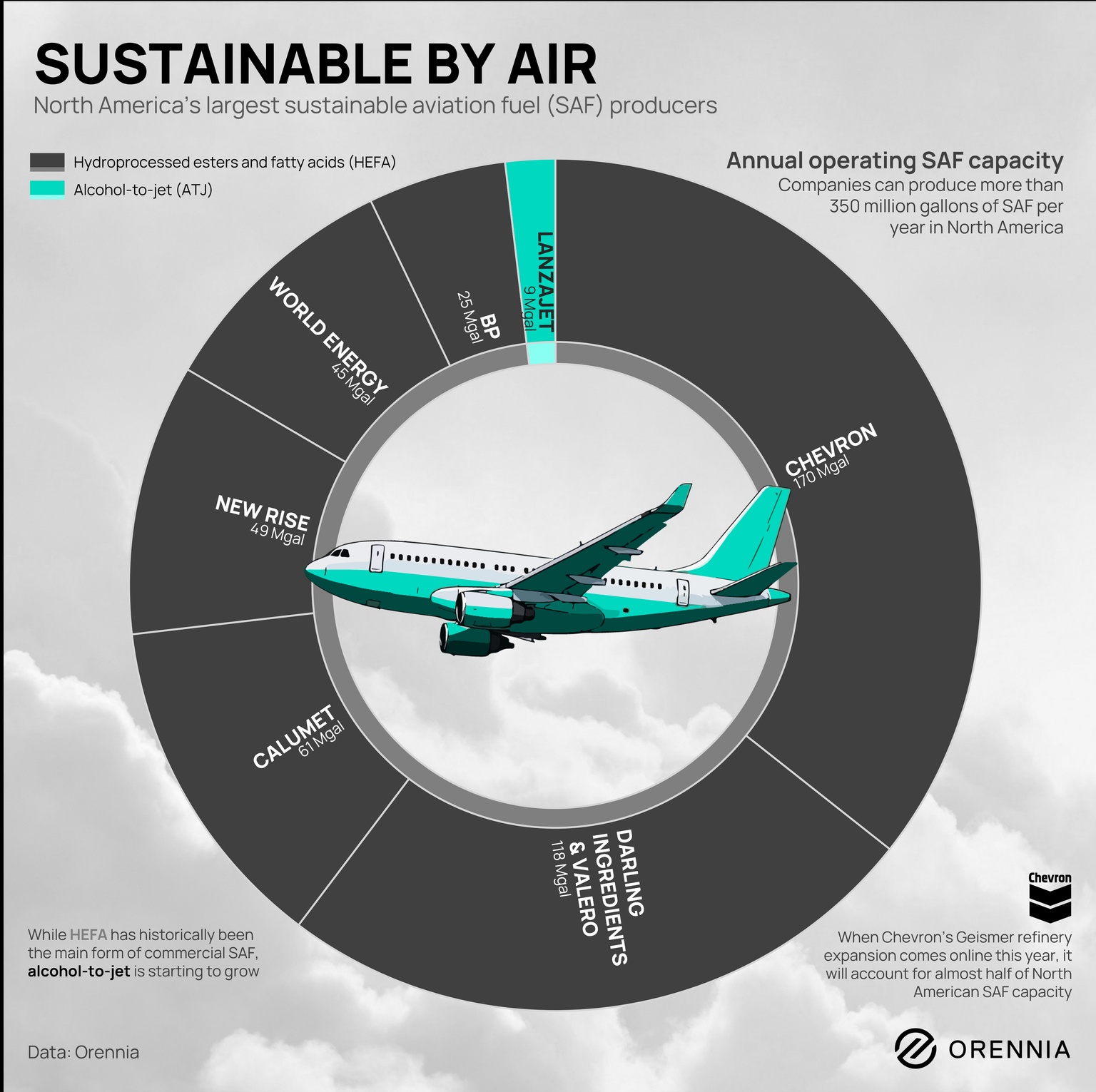
Aaron Foyer
Vice President, Research and Analytics

Aaron Foyer
Vice President, Research and Analytics

Sustainable aviation fuel (SAF) remains one of the only viable ways to reduce flight emissions, especially as key players like Airbus back off their hydrogen-fueled aircraft goals.
The scale: Refineries across North America have the capacity to produce nearly 500 million gallons per year of SAF. For context, that’s less than 2% of total US jet fuel use.
While there are several ways to make SAF, only two are being done commercially in North America.
HEFA vs. ATJ
Of the two, HEFA accounts for nearly all North American production, as it is cheaper to produce today.
Top producers: Oil companies have played a leading role in producing SAF, leaning on decades of experience in refining fuels.
Chevron’s Geismar refinery, designed for both renewable diesel and SAF, will be the largest in North America after its expansion comes online in the coming months.
Looking ahead: The Colorado-based Gevo is currently building its Net-Zero 1 refinery in South Dakota. It’s slated to become the world’s first large-scale net-zero ATJ plant.
+Bonus infographic: Introduction to Sustainable Aviation Fuels
Data-driven insights delivered to your inbox.